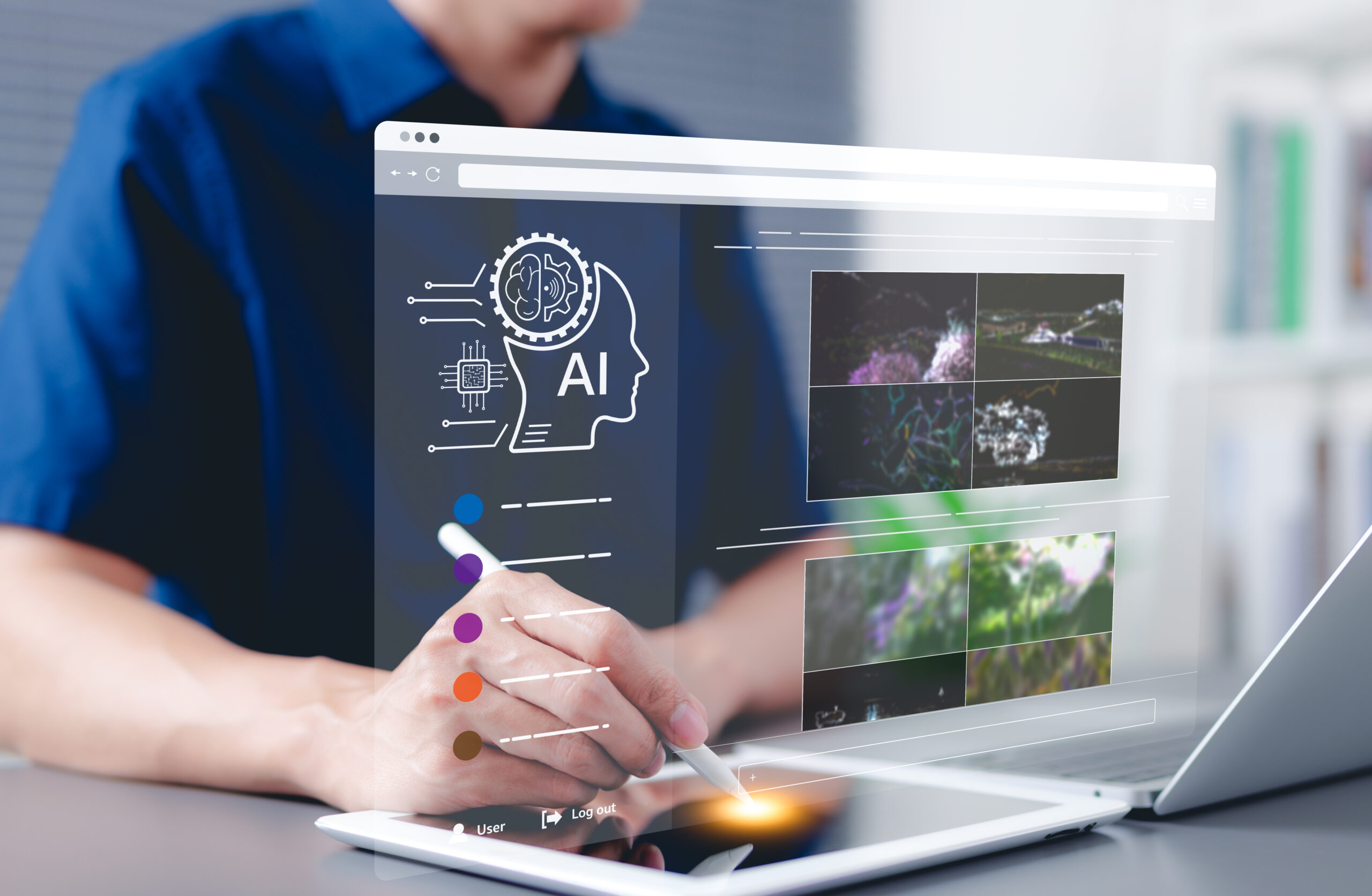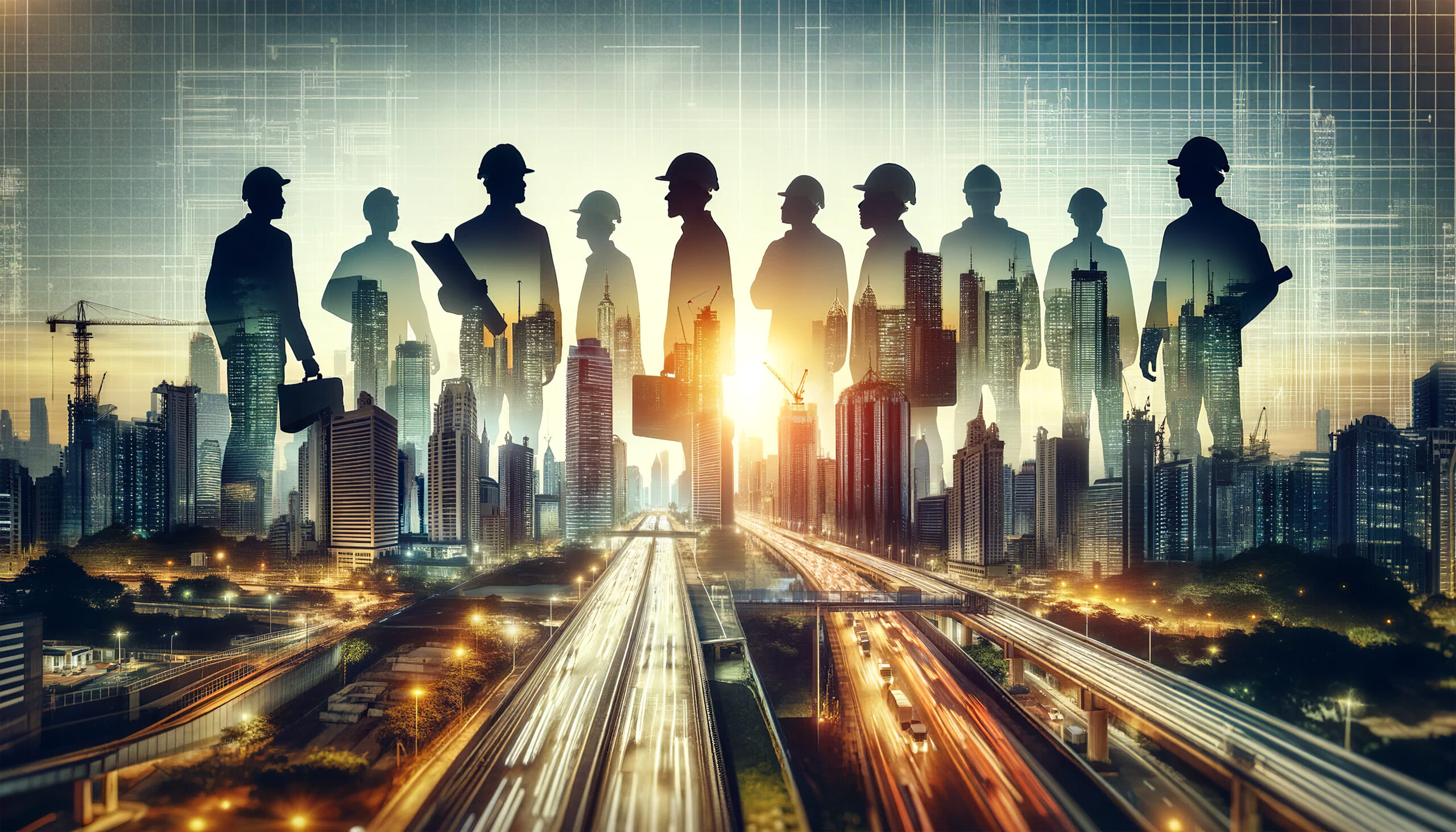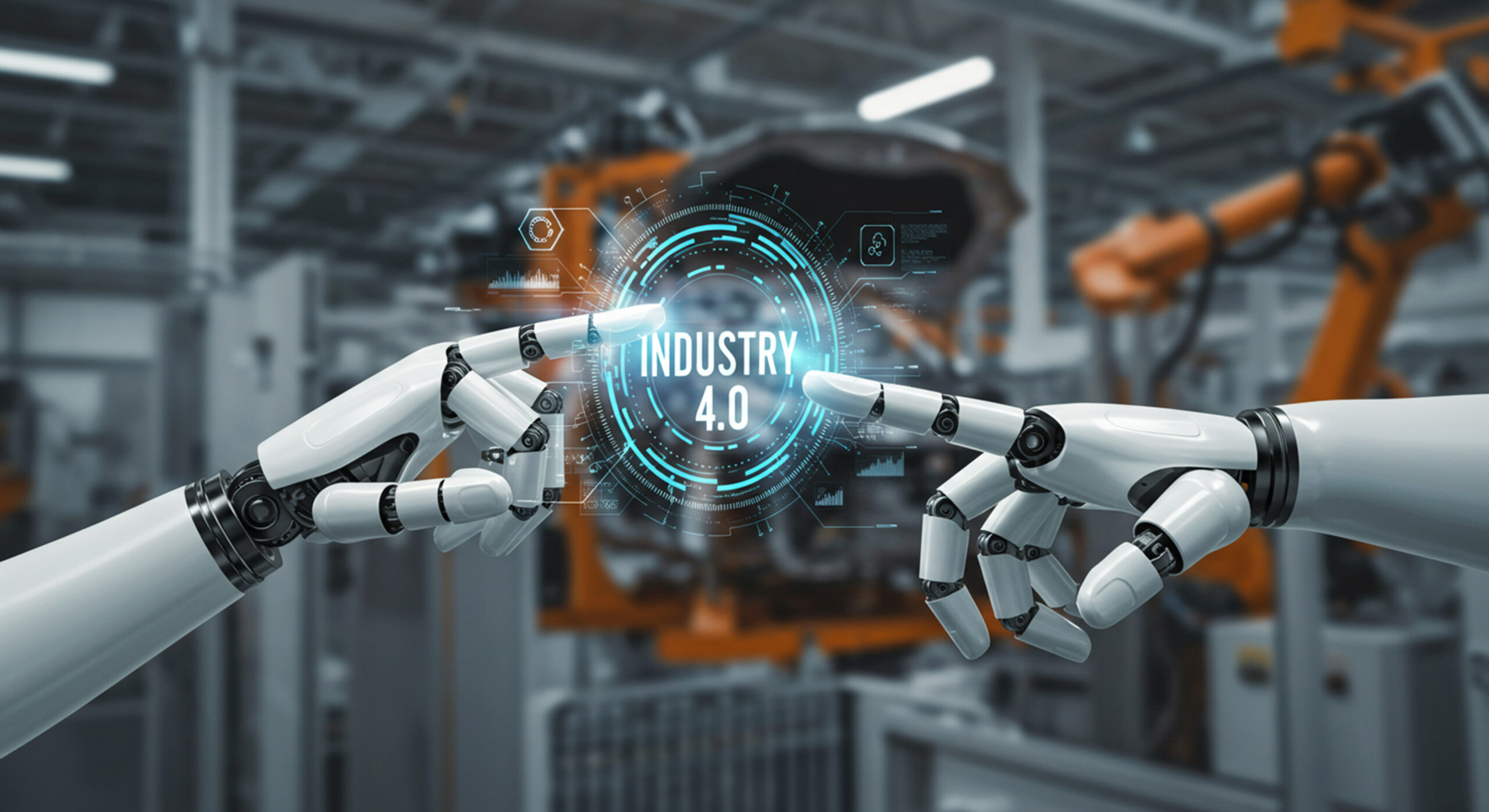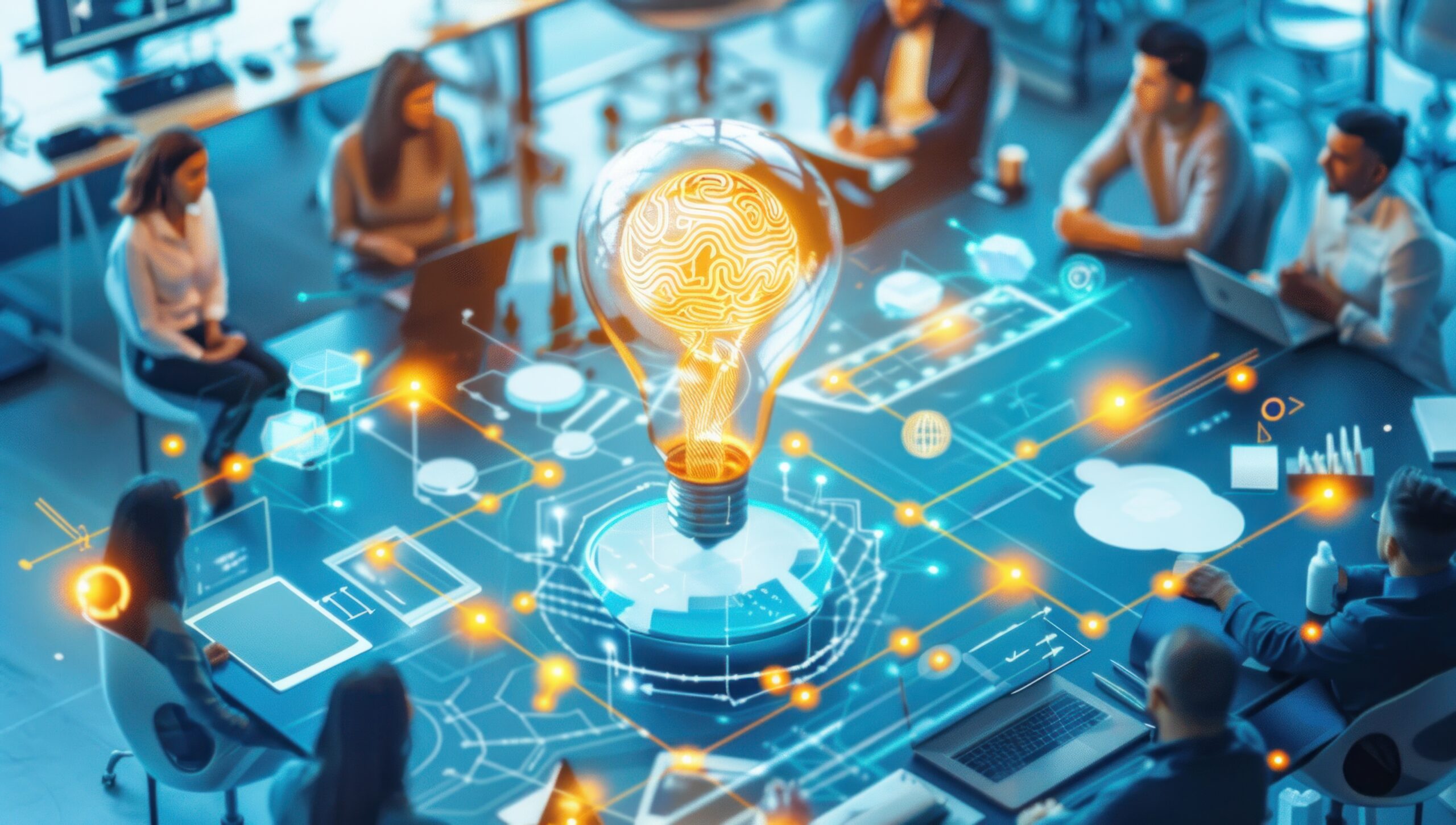How can designers balance AI and creativity effectively to remain competitive in a rapidly evolving industry? In what ways do AI and creativity intersect to enhance, rather than diminish, the design process? What are the potential risks of over-reliance on AI and creativity becoming template-driven in the modern design landscape?
In today’s design landscape, the relationship between AI and creativity is reshaping workflows, pushing designers to find a balance between human ingenuity and machine efficiency. As AI tools automate repetitive tasks, generate data-driven insights, and accelerate production timelines, human designers retain their edge through emotional intelligence, storytelling, cultural sensitivity, and original conceptual thinking. The article explores how successful creatives must leverage AI’s capabilities while safeguarding the irreplaceable qualities of human-centered design to maintain relevance and deepen their craft.
While AI and creativity together offer unprecedented opportunities for speed, personalization, and scalability, the collaboration also presents challenges like over-reliance, loss of craftsmanship, and ethical complexities regarding authorship. Designers must evolve by embracing hybrid thinking, learning to collaborate with AI tools, and staying adaptable amidst technological change. Ultimately, the future of design lies not in choosing between AI and creativity, but in mastering the synergy between them to enhance both innovation and human impact.
In today’s rapidly evolving design landscape, digital transformation is reshaping the creative process, with artificial intelligence emerging as both a powerful ally and a source of apprehension for creative professionals. Design studios increasingly incorporate AI tools into their workflows, from generative algorithms that create preliminary layouts to automation systems that handle repetitive tasks. This integration has sparked ongoing debates about the role of creativity versus automation in the design process.
The discussion around AI and creativity isn’t merely academic—it has profound implications for how designers approach their craft, develop their skills, and position themselves in an increasingly competitive market. Designers find themselves at a crossroads as AI capabilities advance: embrace these new technologies or risk being left behind as the industry evolves.
The most successful designers of the future will likely be those who know when to rely on their uniquely human capabilities and when to leverage AI’s strengths. In this article, we’ll explore how this delicate balance is the key to helping designers maintain relevance while harnessing the full potential of both human ingenuity and computational power.
Table of Contents:
What is human creativity in design?
What does AI-powered efficiency look like in design workflows?
Key differences in how each approaches problem-solving
The Strengths of Human Creativity
Emotional intelligence and intuition
Storytelling and conceptual thinking
The role of cultural context and lived experience
Originality and the “human touch” in visual aesthetics
The Strengths of AI-Powered Design Tools
Speed and consistency in repetitive tasks
Data-driven design recommendations
Enhancing precision and scalability
Accessibility to advanced design capabilities for non-experts
Where They Complement Each Other
Automating the mundane to focus on the meaningful
Collaborative workflows: human input + AI output
Creativity bottlenecks from template-driven outputs
Ethical and authorship concerns
The dilution of design craftsmanship
Evolving Skills for Modern Designers
Embracing hybrid thinking: technical + artistic
Learning how to work with AI, not against it
Staying adaptable in a shifting creative landscape
Defining the Roles
When people think about a world with AI, they tend to imagine machines taking over human jobs. While there may be some truth to this, the reality is more complex. In the design world, AI is positioned to assist rather than replace human contributions. Much of this reality is rooted in how humans apply their innate creativity to projects.
What is human creativity in design?
Human creativity in design represents our ability to generate novel, meaningful solutions that respond to complex problems while considering aesthetic, emotional, and cultural dimensions. It encompasses the capacity to make unexpected connections between disparate concepts, to empathize deeply with end-users, and to infuse work with personal perspective.
Human designers draw from their lived experiences, cultural contexts, and intuitive understanding of unspoken human needs—qualities that allow them to create work that resonates on levels beyond mere functionality.
What does AI-powered efficiency look like in design workflows?
AI-powered efficiency manifests in various forms within today’s design workflows. At its core, it involves leveraging computational tools to automate repetitive tasks, analyze large datasets for insights, generate multiple design variations based on parameters, and optimize designs according to quantifiable metrics. These tools range from simple plugins that automate tedious production tasks to sophisticated systems that generate initial design concepts based on specific requirements or analyze user interactions to provide data-driven recommendations.
Key differences in how each approaches problem-solving
Human creativity and AI systems differ fundamentally in their approaches to problem-solving. Human designers typically employ a nonlinear, intuitive process that embraces ambiguity and contradiction. They can reframe problems entirely, question underlying assumptions, and make intuitive leaps based on incomplete information.
AI systems, on the other hand, excel at linear, systematic problem-solving within clearly defined parameters. They can process vast amounts of data to identify patterns and optimize toward specific goals, but they generally operate within the boundaries of their programming and training data. While AI excels at finding optimal solutions within established frameworks, it cannot yet genuinely question the frame itself or understand the implicit cultural or emotional dimensions that might make a technically “inferior” solution more appropriate in certain contexts.
The Strengths of Human Creativity
The AI-powered design tools market is expected to expand from $5.54 billion in 2024 to $6.77 billion by the end of 2025, reflecting a compound annual growth rate (CAGR) of 22.2%. This growth rate is largely consistent with many other industries, which are constantly looking for ways to leverage AI to improve productivity and reduce costs.
However, while many of these industries may be primed to exclude non-machine collaborators, architecture and engineering require certain elements that only humans can bring.

Experience Our No-Obligation Trial: Uncover How Our Proven Engineering Outsourcing Services Can Elevate
Your Business


Experience Our
No-Obligation Trial: Uncover How Our Proven Engineering Outsourcing Services Can Elevate
Your Business
Emotional intelligence and intuition
The human capacity for emotional intelligence (understanding and responding to subtle emotional cues) remains one of our most distinctive creative advantages. Designers intuitively grasp how a particular color scheme might evoke specific emotional responses or how the rhythm of elements on a page creates tension or harmony.
These nuanced emotional judgments often defy explicit articulation, making them difficult to replicate algorithmically. When designers make decisions based on what “feels right,” they’re drawing on vast reservoirs of accumulated experience and emotional understanding that AI systems cannot yet access and, perhaps, never will.
Storytelling and conceptual thinking
Human designers excel at crafting compelling narratives and conceptual frameworks that give meaning to their work. They can weave complex stories that connect with audiences emotionally, culturally, and intellectually.
This ability to think metaphorically, create multilayered meanings, and understand how design elements contribute to an overarching narrative represents a uniquely human creative strength. While AI and creativity can intersect in many productive ways, the depth of human storytelling remains unmatched by computational approaches.
The role of cultural context and lived experience
Design never exists in a vacuum—it’s always situated within specific cultural contexts that influence how it’s perceived and experienced. Human designers bring their lived experiences, cultural knowledge, and sensitivity to social nuances to their creative work. They understand implicit cultural references, historical associations, and contextual factors that might make a design element appropriate in one setting but problematic in another. This cultural fluency allows human designers to create work that respects and resonates with diverse audiences in ways that AI systems, limited by their training data, cannot yet fully replicate.
Originality and the “human touch” in visual aesthetics
Despite advances in generative AI, the most groundbreaking and influential design work still emerges from human creativity. The subtle imperfections, unexpected choices, and personal signatures that characterize human-created work often constitute its most compelling aspects.
Human designers can deliberately break established rules, introduce controlled chaos, or make counterintuitive decisions that result in fresh, distinctive aesthetics. The ability to think in truly novel ways (creating ideas that go beyond existing patterns rather than simply extending them) remains a key advantage of human creativity in design.
The Strengths of AI-Powered Design Tools
Recent surveys have found that 8% of construction and engineering firms have implemented AI solutions into their practice, with 20% currently working on implementing solutions. That may seem like a small number, but experts expect it to skyrocket in the coming years, thanks mostly to the following benefits delivered by AI-powered design tools.
Speed and consistency in repetitive tasks
AI excels at handling repetitive design tasks with remarkable speed and unwavering consistency. Tasks that might take human designers hours (such as creating multiple variations of a layout, formatting extensive document collections, or processing large batches of images) can be completed in minutes by AI systems.
Unlike humans, these systems don’t experience fatigue, boredom, or inconsistency as they work through mundane tasks. This capability allows design teams to dramatically accelerate production timelines while maintaining quality standards across large projects.
Data-driven design recommendations
One of AI’s most powerful contributions to design lies in its ability to analyze vast datasets and extract actionable insights. AI systems can process user behavior data to identify patterns, preferences, and pain points that might elude even experienced designers.
These data-driven recommendations can inform design decisions at every level, from layout configurations that optimize engagement to color palettes that resonate with specific demographic groups. As the relationship between AI and creativity continues to evolve, this analytical capability offers designers objective evidence to complement subjective judgments.
Enhancing precision and scalability
AI tools bring unprecedented precision to design processes, ensuring pixel-perfect execution and mathematical accuracy in complex projects. Whether calculating optimal spacing in responsive layouts, ensuring color consistency across different output media, or maintaining proportional relationships in scalable designs, AI systems handle technical precision requirements that challenge human capabilities. This precision, combined with AI’s scalability advantages, allows design teams to maintain quality standards across projects of any size, from single assets to complex systems with thousands of components.
Accessibility to advanced design capabilities for non-experts
AI is democratizing knowledge across every field and industry. In construction and engineering, AI-powered design tools have democratized access to sophisticated design capabilities, allowing non-specialists to create work that would previously have required extensive training.
Intuitive interfaces guided by AI can help novices make appropriate design choices, automatically correct common mistakes, and suggest improvements based on established principles. While this accessibility raises concerns about the devaluation of design expertise, it also enables broader participation in the creative process. It allows subject matter experts to express their ideas visually without extensive design training.
Where They Complement Each Other
While AI benefits the design world considerably, it’s still just a tool, requiring human control, guidance, and creativity. When humans and AI come together, the results can be spectacular. Here are some examples of how this collaboration works best in design.
Ideation and prototyping
The ideation phase of design presents a particularly fertile ground for human-AI collaboration. Human designers can define creative direction, conceptual frameworks, and emotional targets, while AI systems can rapidly generate diverse variations for consideration.
This collaborative approach combines human conceptual thinking with computational divergent exploration, allowing teams to explore a broader solution space than either could access independently. Similarly, AI can quickly transform rough concepts into testable models in prototyping, accelerating the iterative process while preserving the human designer’s creative intent.
Personalization at scale
The fusion of AI and creativity enables unprecedented personalization capabilities while maintaining design coherence. Human designers can establish core brand identities, design systems, and quality standards, while AI systems apply these frameworks to generate customized experiences for individual users.
This partnership allows brands to deliver personalized communications, interfaces, and experiences that respond to user preferences and behaviors without sacrificing design integrity or requiring impractical resource investments.
Automating the mundane to focus on the meaningful
Perhaps the most immediately valuable aspect of human-AI collaboration is how it liberates human creative capacity from mundane tasks. By delegating repetitive, technical, or algorithmic design aspects to AI systems, human designers can reclaim time and mental energy for the conceptual, emotional, and innovative dimensions where their abilities shine brightest.
This division of labor elevates the entire design process, allowing human creativity to focus on meaningful problems rather than getting bogged down in production details.
Collaborative workflows: human input + AI output
The most effective design processes now incorporate iterative collaboration between human designers and AI tools. Human designers provide initial concepts, evaluate AI-generated options, refine promising directions, and make critical judgments about appropriateness and quality. AI systems amplify human creativity by exploring parameter spaces, suggesting alternatives, implementing technical requirements, and maintaining application consistency. This collaborative workflow combines human discernment with computational power, resulting in outcomes neither could achieve independently.
Potential Risks and Tensions
According to a recent Pew Research study, 52% of workers are worried about AI’s impact on their jobs, with 32% believing it will lead to fewer opportunities. This anxiety is one of the side effects of rapidly advancing technologies of any sort. That said, unlike past technologies, AI brings a unique set of potential challenges that extend beyond job displacement. These include:
Over-reliance on automation
As AI tools become increasingly sophisticated, designers face the risk of over-reliance on automated processes at the expense of developing fundamental skills and creative thinking.
When designers delegate too many decisions to AI systems without understanding the underlying principles, their ability to make independent judgments may atrophy. This dependency creates vulnerability in situations where AI suggestions are inappropriate or when unique problems require fresh thinking beyond established patterns.
Maintaining a healthy balance between AI and creativity requires designers to remain active participants rather than passive consumers of AI outputs.
Creativity bottlenecks from template-driven outputs
The efficiency of AI-powered tools often comes with a homogenizing influence. When many designers use the same algorithms, drawing from similar data sets and employing common templates, design outputs can converge toward predictable patterns.
This convergence risks the development of creativity bottlenecks where truly novel approaches become increasingly rare. As AI systems primarily learn from existing work, they may inadvertently reinforce established conventions rather than encouraging boundary-pushing innovation, potentially leading to creative stagnation across the industry.
Ethical and authorship concerns
Integrating AI into design workflows raises complex questions about authorship, credit, and compensation. Who can claim creative ownership when an AI system generates significant portions of a design based on its training on others’ work? How should contributions be attributed when designs emerge from human-AI collaboration?
These ethical considerations extend beyond legal questions to touch on fundamental values within creative professions. As AI capabilities expand, the design community must develop new frameworks for understanding creative contributions, recognizing both human direction and computational execution.
The dilution of design craftsmanship
As AI tools make sophisticated design outputs more accessible to non-specialists, concerns arise about the potential dilution of design craftsmanship.
When non-designers can produce visually polished work without understanding fundamental principles, the perceived value of design expertise may diminish. While this democratization opens creative opportunities for many, it also challenges the professional identity of designers who have invested years in developing their skills.
The tension between accessibility and expertise requires thoughtful navigation to preserve the depth of design practice while embracing technological advances.

Experience Our No-Obligation Trial: Uncover How Our Proven Engineering Outsourcing Services Can Elevate
Your Business


Experience Our
No-Obligation Trial: Uncover How Our Proven Engineering Outsourcing Services Can Elevate
Your Business
Evolving Skills for Modern Designers
Whatever AI’s limitations and challenges, it’s here to stay. Designers will need to adapt to this shifting reality to stay relevant in an increasingly competitive landscape. This means embracing the technology instead of resisting it, and it also means staying adaptable to an unpredictable future.
Embracing hybrid thinking: technical + artistic
Tomorrow’s designers must develop hybrid thinking that integrates technical and artistic mindsets. This means cultivating systematic, analytical approaches and intuitive, emotional sensibilities. Successful designers will understand computational logic well enough to effectively direct AI tools while maintaining their artistic vision and human-centered focus.
This hybrid thinking allows designers to frame problems appropriately for AI processing while applying human judgment to the results, creating a synergistic relationship between AI and creativity rather than a competitive one.
Learning how to work with AI, not against it
Adapting to an AI-augmented design landscape requires learning to work collaboratively with these tools rather than resisting their integration. This collaboration involves understanding the capabilities and limitations of various AI systems, developing prompt engineering skills to direct AI outputs effectively, and establishing workflows that leverage algorithmic strengths while preserving human creative direction.
Designers who approach AI as a creative partner rather than a threat will discover new possibilities at the intersection of human intuition and computational power.
Staying adaptable in a shifting creative landscape
Perhaps the most essential skill for designers in this era of rapid technological change is adaptability itself. As AI capabilities evolve and new tools emerge, fixed workflows quickly become obsolete. Designers must cultivate a continuous learning mindset, experimenting with emerging technologies while focusing on fundamental design principles that transcend specific tools. This adaptability extends beyond technical skills to encompass evolving business models, changing client expectations, and shifting definitions of design value in an AI-augmented industry.
Conclusion
The relationship between human creativity and AI-powered efficiency in design isn’t a zero-sum competition but rather an evolving partnership with tremendous potential. The most successful designers of the future will be those who can thoughtfully navigate this intersection, leveraging AI’s analytical and productive capabilities while applying uniquely human creative judgment.
By automating the mundane, we free ourselves to focus on the meaningful. By augmenting our abilities with computational power, we extend what’s possible while maintaining the human essence that gives design its soul. The balance between AI and creativity will continue to shift as technologies advance. Still, the core principles of human-centered design remain our compass as we navigate this exciting, complex terrain.




